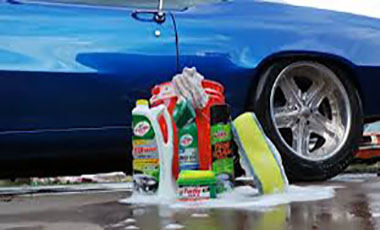You wonder how vehicle sanitation makes a difference? Well similar to cleaning the surfaces of public facilities, many vehicles have surfaces that hold debris. This allows for microbes, both viral and bacterial, to take root and slowly multiply, passing from person to surface to person. In a vicious cycle, the same bacteria and disease may be recycled in one vehicle merely from constant exposure to new people or animals, further spreading from surfaces external of the vehicle such as those from work, school or home to vehicle interiors. Nevertheless, the lifespan of bacteria and disease can be cut short through the application of surface appropriate, bio-friendly cleansing products and applications.
The key to vehicle sanitation that all certified technicians understand is the technique versus the chemicals alone. Customers may not see the immediate difference. But imagine just anyone washing your vehicle and flooding it with cleaners and excess water. That only adds to the problem of removing mold and dirt in the first place. Therefore, certified technicians know how to sanitize vehicles strategically and safely. First, vehicle sanitation is not a matter or rubbing cloths dipped in cleaner on cloth, leather, plastic, vinyl, or carpeted surfaces. No!
Vehicle sanitation begins with a cleanser-appropriate wipe down, followed by a steaming in which the technician places a dry cloth over the steamer for plastic and leather surfaces or the steamer directly on cloth and carpet and runs the apparatus along the entire surface. The steaming plus the initial wipe down not only kill but loosen debris and dirt from surfaces. This allows surfaces to breathe again. The better surfaces can breathe, the less chances for stains and debris to support microbial growth. Next, the tech may shampoo the cloth or carpeted surface, then apply a wet vac to remove all wastewater, cleansers, and debris. From that point, regardless of surface, the tech will wipe off any excess moisture still on the surface. The surfaces are then virtually dry and fragrant auto perfumes are applied. The look, the feel, and the smell of vehicle interiors are inviting and above all healthy for drivers and passengers alike.
Vehicle sanitation certification is essential to regulating how and who provides this essential service for motorists. The system of certification will support databases, noting legal providers and the dates when vehicles were sanitized. This will be a proficient means to monitor clinical efforts to utilize sanitation against the spread of diseases such as COVID-19. Since there are licenses provided by the state for specific businesses, the same system of certification is applicable to auto detailers and vehicle sanitation service providers, giving vehicle owners another layer of protection for themselves and their families.
Vehicle sanitation certification involves the knowledge of how to clean and detail various interior and exterior services, the proper tools and chemicals used, Occupational Safety and Health Administration (OSHA) regulations, Material Safety Data Sheets (MSDS), Environmental Protection Agency (EPA), water restrictions, inspections, and other key regulations. Moreover, certified vehicle sanitation specialists are members of Detailers Across America (DAA). In 2011, Bentley Brandon of Luxury Wash established the DAA, a nationally recognized organization with a broad in 22 states. Considering the benefits for vehicle sanitation certification for auto detail/auto care professionals, the benefit for vehicle owners and their vehicles is exponential.
National Car Wash Day COVID-19 Prevention Vehicle Sanitation

